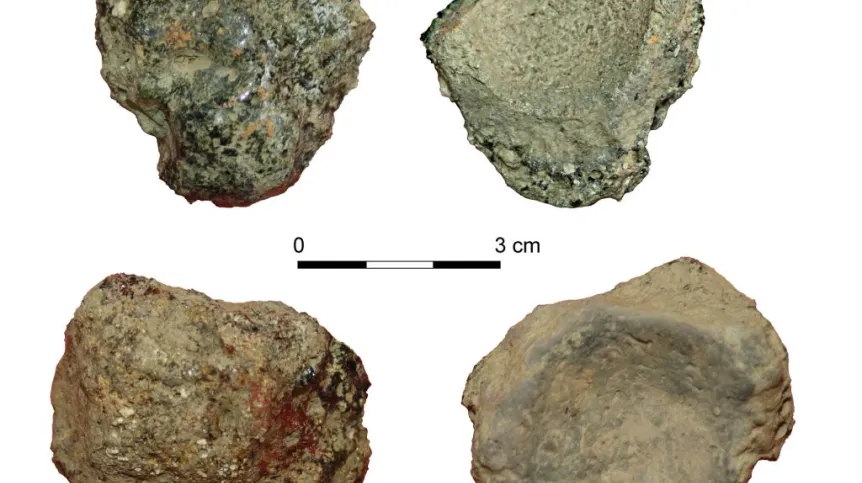
Cracked glass beads, pieces of melted glass and glass "teardrops" - are among the remains of the glass workshop, which operated approx. 2 thousand years ago on Mount Grojec in Żywiec. It could be the oldest place of this type in Poland.
There is little evidence that glass was produced and processed in prehistory in the Polish territory. This type of activity flourished only in the Middle Ages. "Therefore, our findings are very important" - emphasised leader of excavations at Mount Grojec, Dr. Tomasz Gralak from the Institute of Archaeology, University of Wroclaw.
Mount Grojec, now covered with forest, is a frequent destination for residents of Żywiec and many tourists. "The mountain is located centrally in Żywiec Valley and offers a great view of the area. Probably for this reason a settlement was established here more than 2.5 thousand years ago" - said Dr. Gralak.
Research shows that people inhabited the slopes of the mountain from approx. VI/V century BC - until the turn of the eras. This is evidenced by the characteristic forms of discovered objects. The remains of intense economic activity date back to the end of this long period - archaeologists have discovered numerous furnaces, some of which could have been used for metal and glass processing.
"It was here that half-processed material in the form of lumps of raw glass or metal bars was delivered and finished items were made" - said Dr. Gralak.
Glass objects discovered in the vicinity of the furnaces drew particular attention of researchers. Only few and uncertain traces of glass processing in such early periods in our lands are known so far - emphasised the archaeologist.
In addition to furnaces, scientists have discovered slag glass - heavily melted lumps of glass, which are waste products of the workshop\'s activity. There were also broken fragments of lumps of raw glass - half-product supplied from glassworks. Archaeologists also found glass "tears", another type of production waste.
Not many fragments of objects and glass waste were discovered - emphasised the archaeologist. But they illustrate the full course of the process. It is concluded by the discovered finished products, such as blue-purple beads, and cracked pieces - those that were made with defects by the ancient glassmakers.
The fact that the studied site was a workshop is further evidenced by the discovery in the form of a large well-cistern dug nearby. Water was in fact necessary in the course of metalworking. There are crucibles, which were used for melting bronze, as well as the stone grinders needed to form the objects at the final stage. It can not be excluded that some of these objects were also used in the production of glass beads. This, however, can only be confirmed by further expert analysis - reserved the archaeologist.
Archaeologists also discovered a few houses in the study area. But there is no simple answer to the question of who the people were who lived on Mount Grojec more than 2 thousand years ago, worked there and perhaps also mastered the art of glass processing.
"They were probably influenced by Celtic tribes, which had the knowledge of glass processing. But it was a local population, limited to the mountain areas" - believes head of excavations.
Researchers plan to perform expert analyses to determine where the glass half-product came from. It could have been imported from southern Europe, perhaps from the Mediterranean.
Recent excavations at Mount Grojec took place in 2012-2014 under the auspices of the University of Wroclaw and the Municipal Museum in Żywiec. The results will be published this spring as part of the series "Archäologische Forschungen in Niederösterreich" in the volume accompanying the symposium XI Frühgeschichtlichen Konferenz "Archäologie der Barbaren 2015".
PAP - Science and Scholarship in Poland, Szymon Zdziebłowski
szz/ zan/ mrt/
tr. RL













